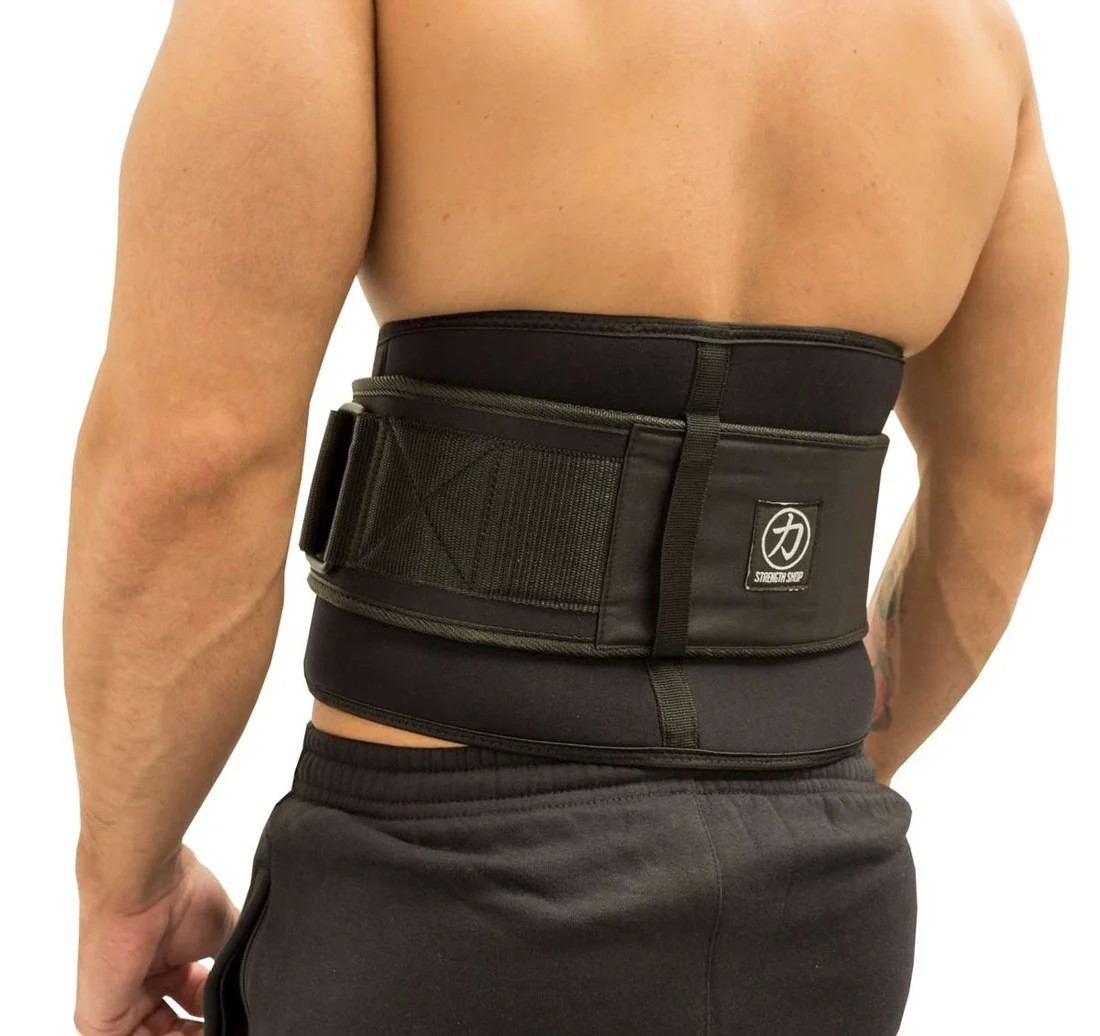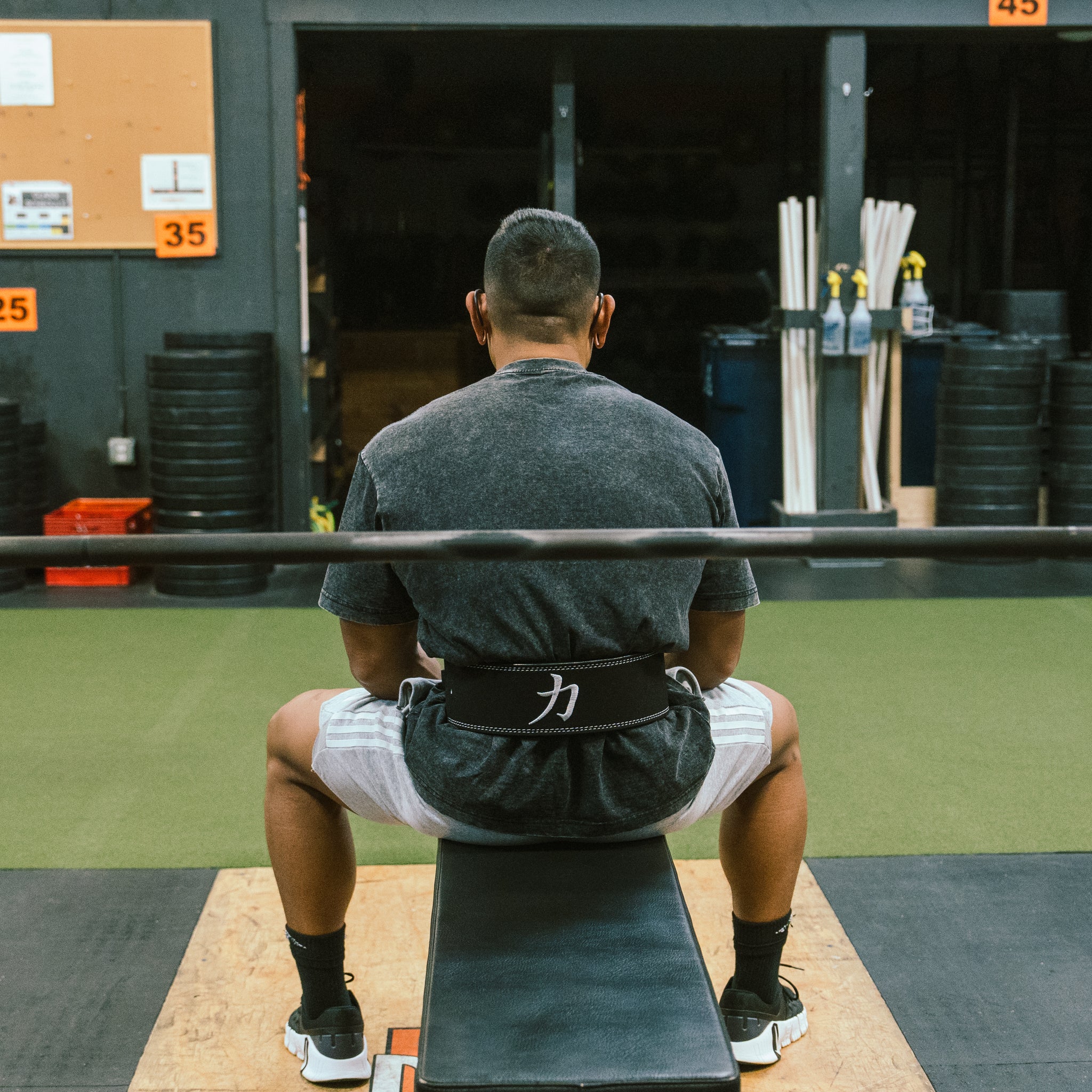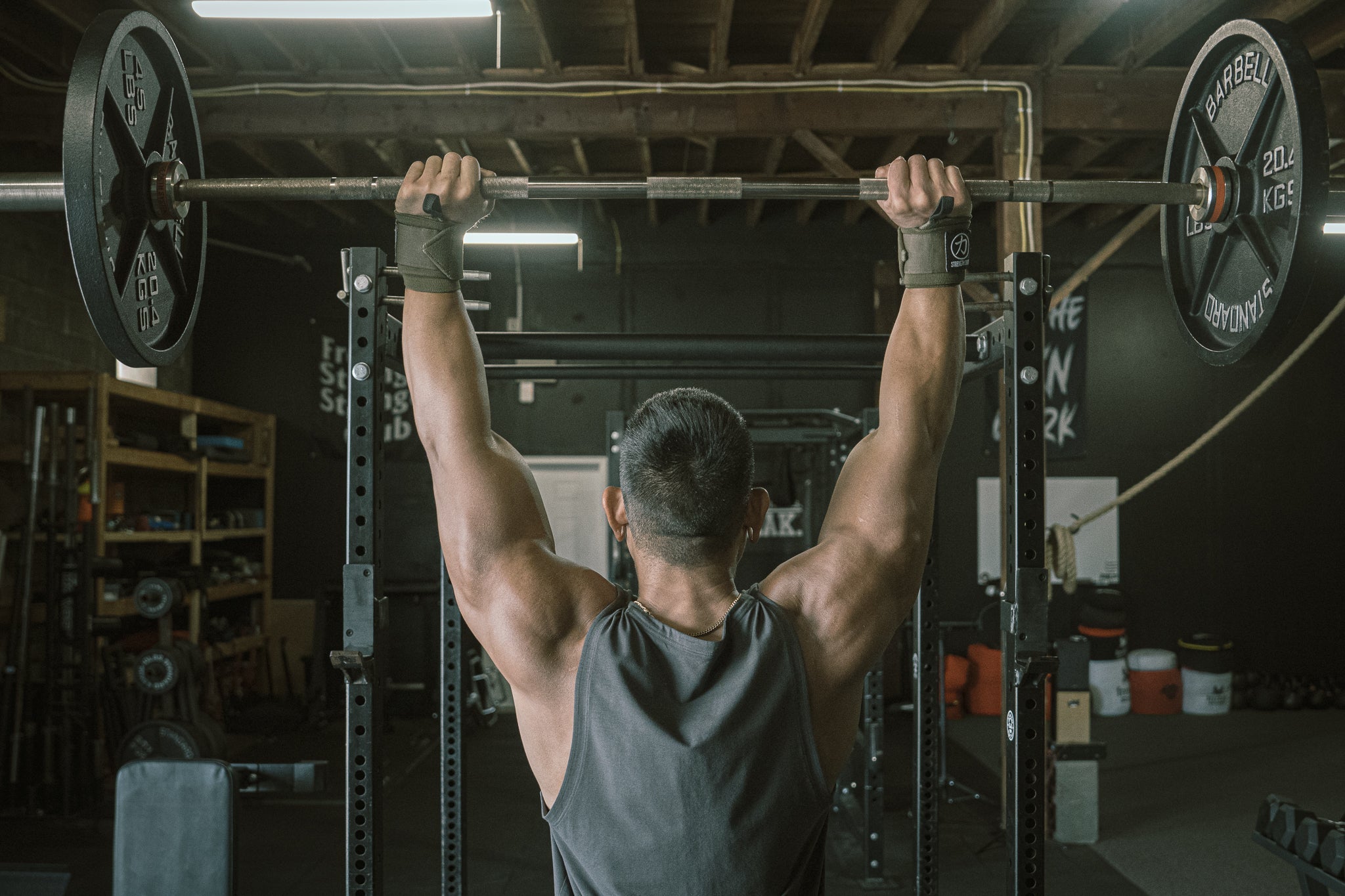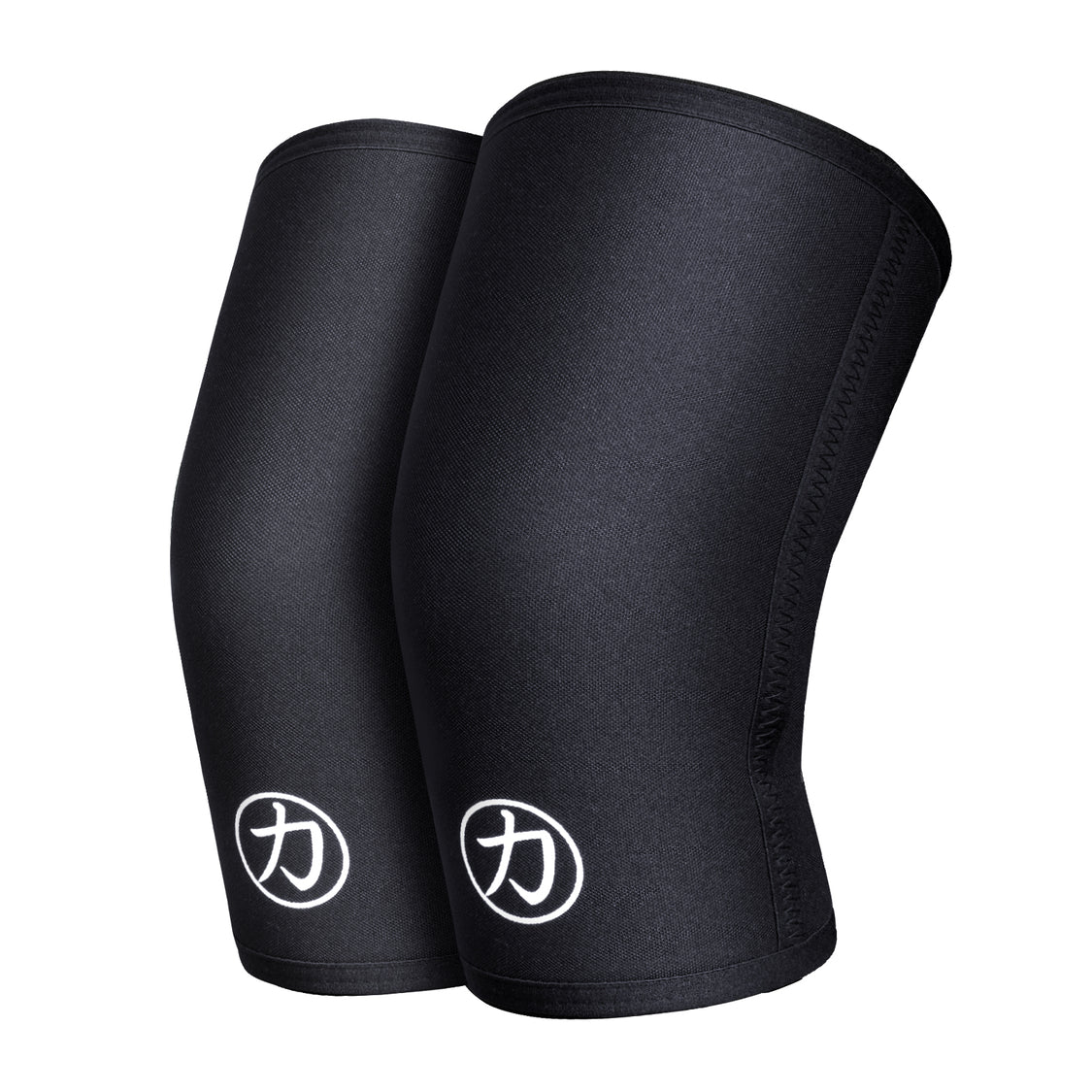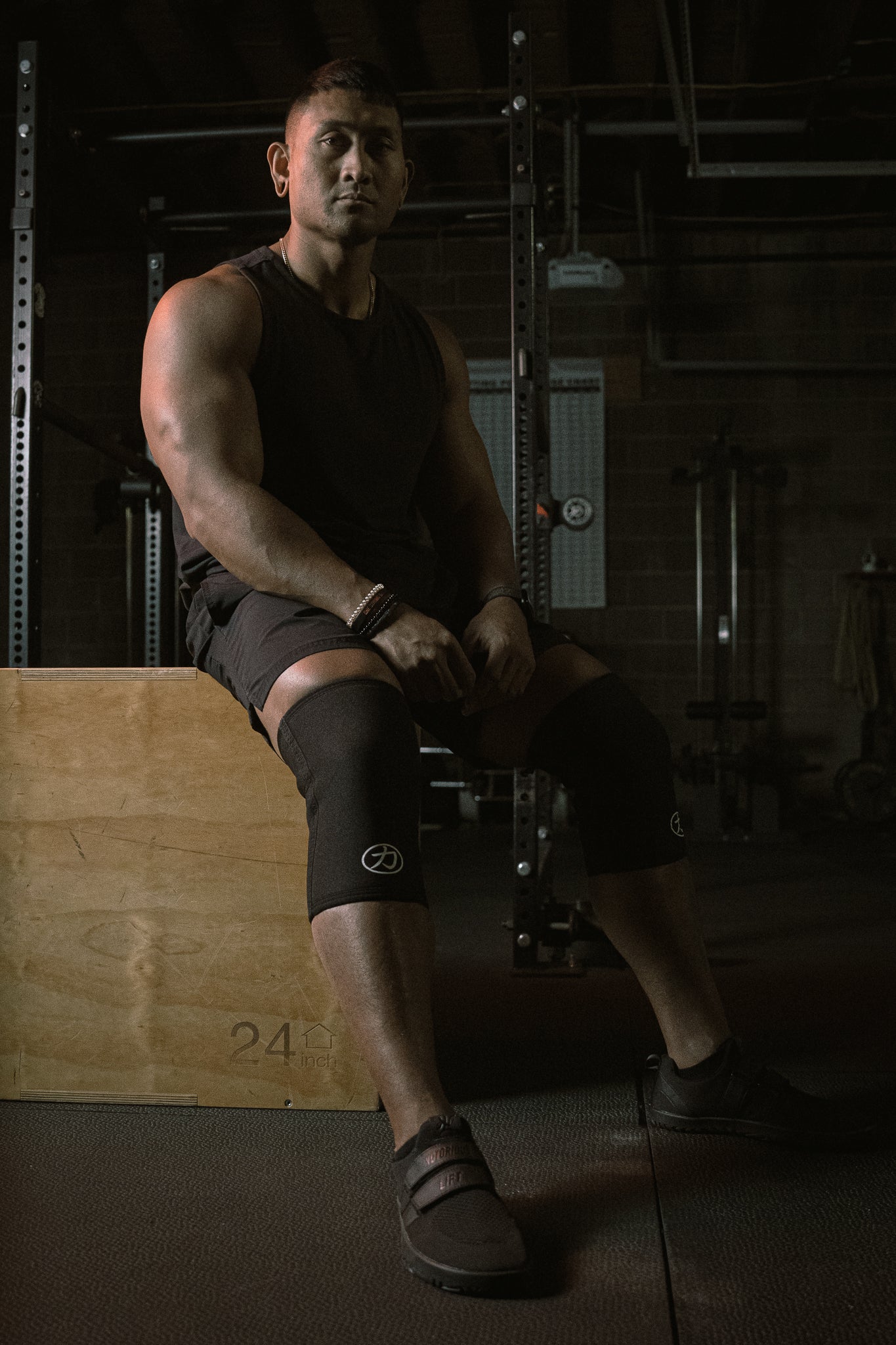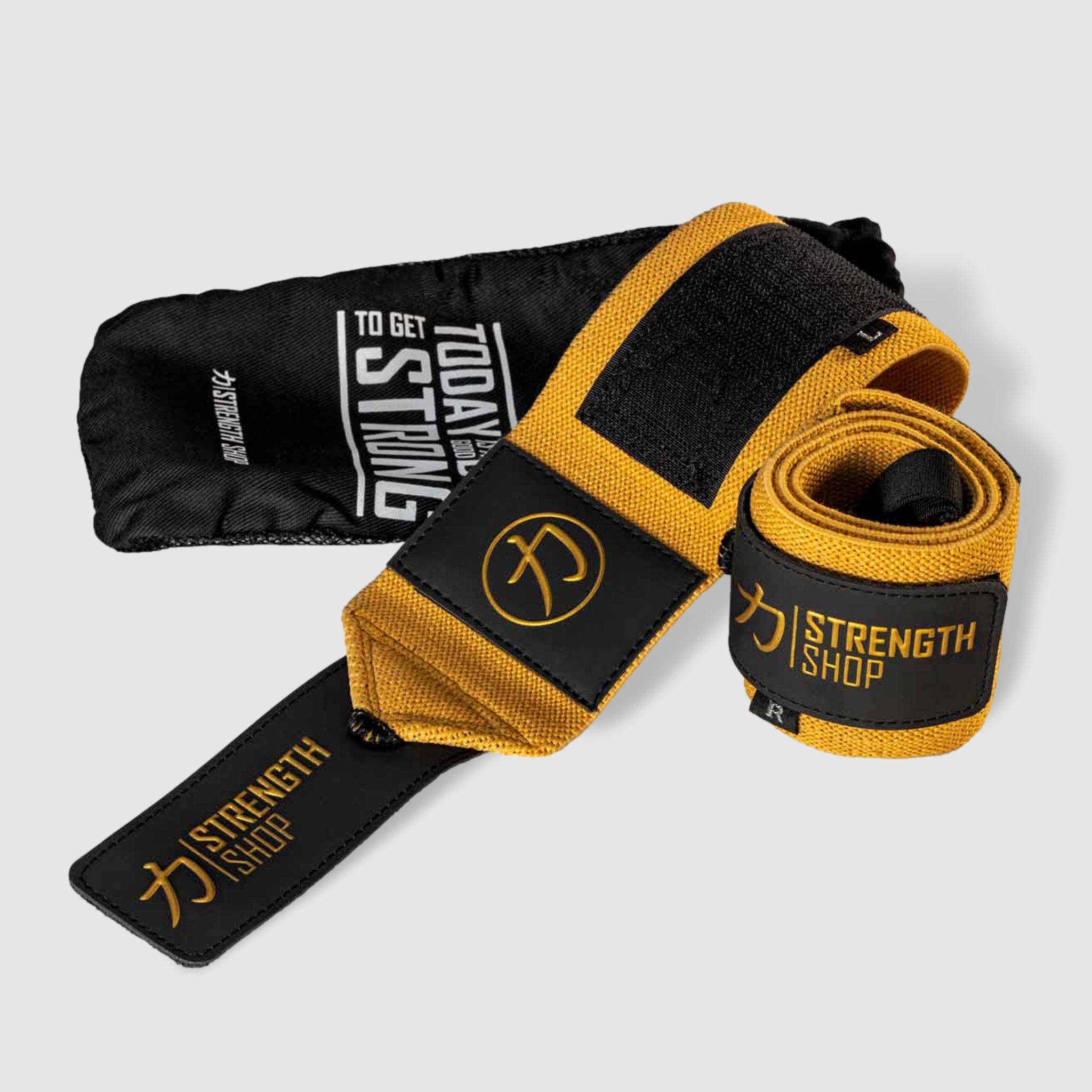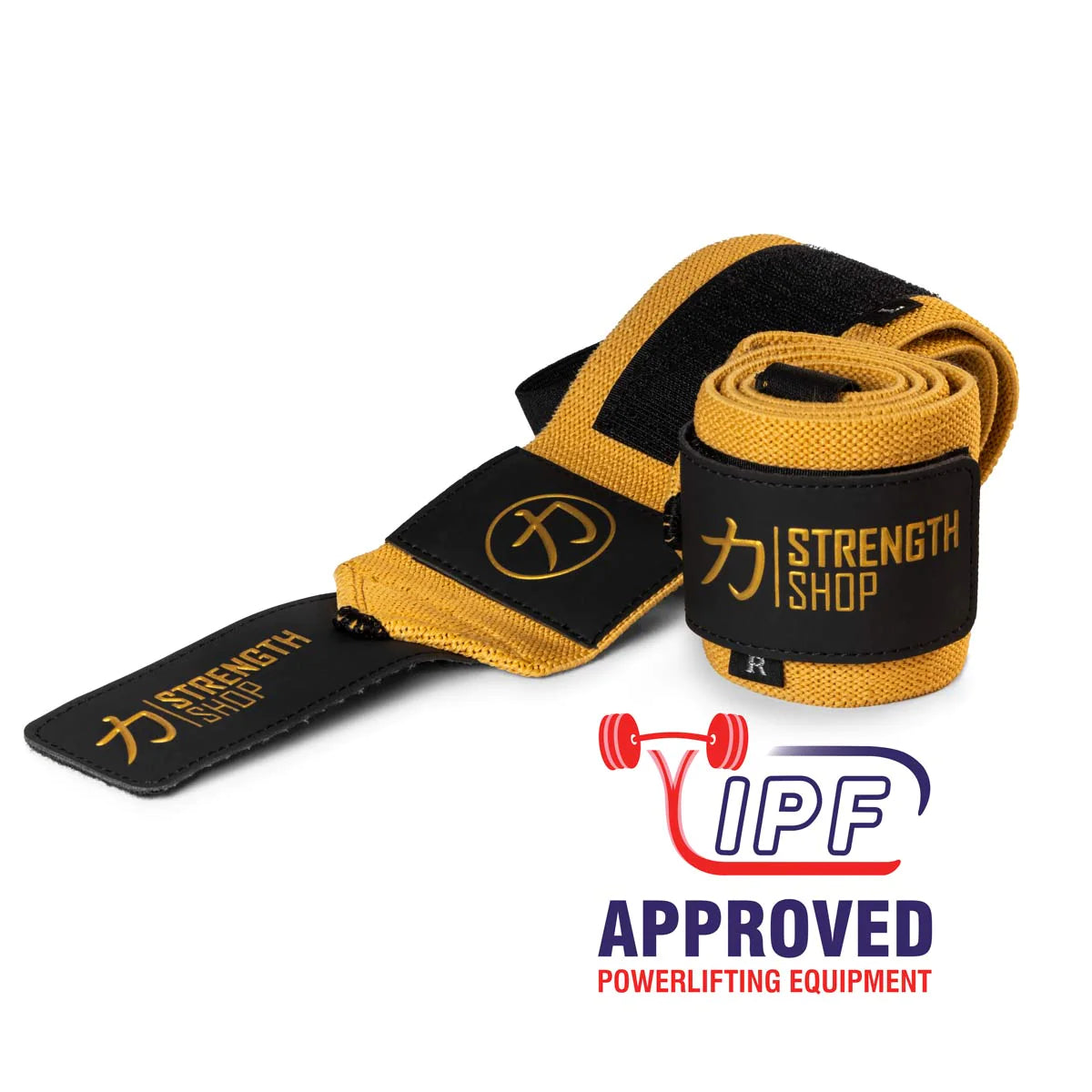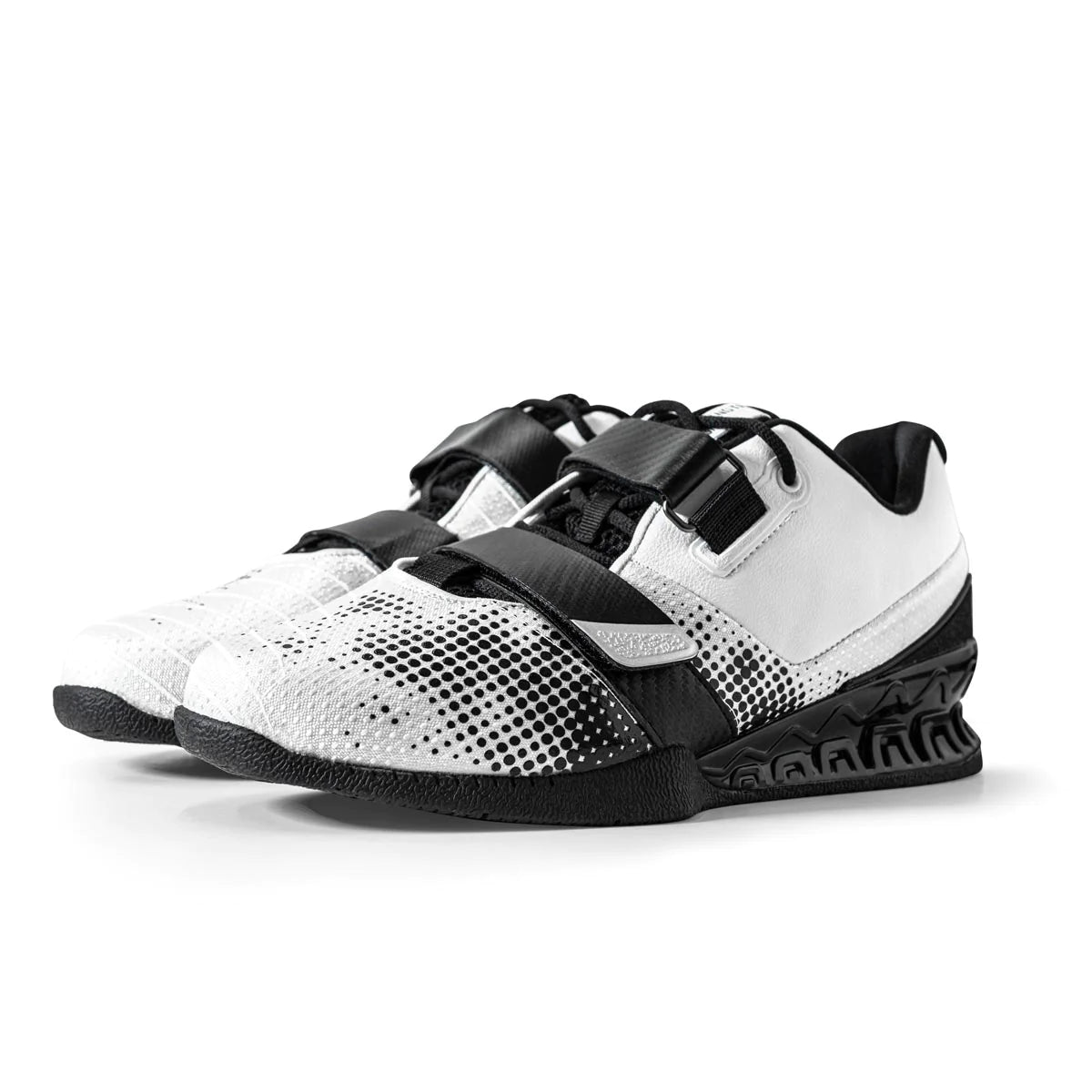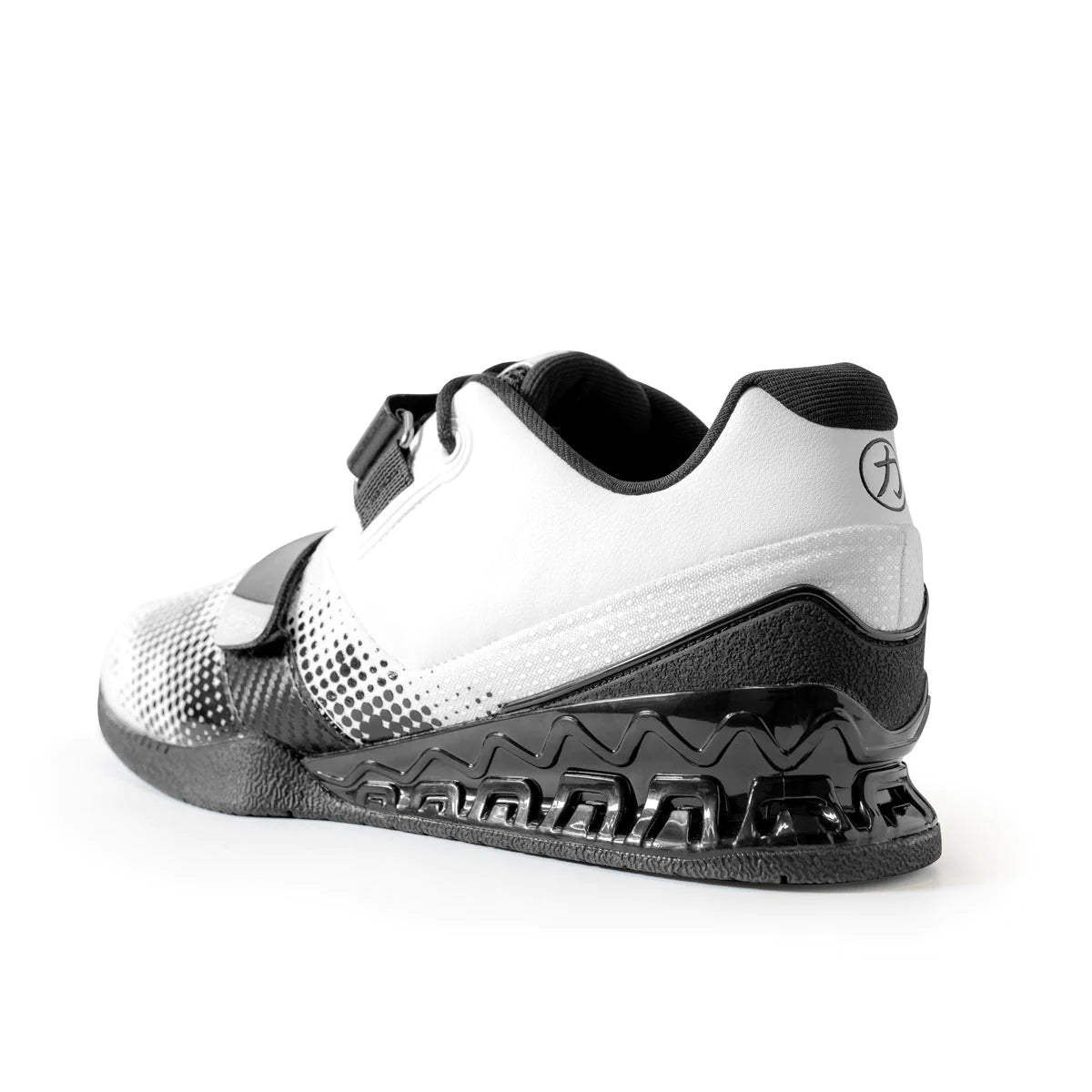Have you ever wondered, "Should I wear a lifting belt when I deadlift?" You're not the only one. Deciding whether to use a belt can feel overwhelming, especially with so much advice out there. As experts in weightlifting belts, we've broken it all down for you. From the benefits and drawbacks to the science behind belts, we'll cover everything you need to know to decide if a lifting belt is right for your deadlift sessions.
What Is a Weightlifting Belt?
A weightlifting belt is a sturdy gear worn around the waist during heavy lifts like squats and deadlifts. Its primary purpose is stabilizing your core by providing a firm surface for your abdominal muscles to brace against. This added stability helps protect your spine and enables you to generate more force during complex lifts.
Weightlifting belts typically measure about 4 inches (10 cm) wide and 6-13 mm thick. They have adjustable prongs or lever closures for a secure fit. Manufacturers also design lifting belts for women to suit their anatomy better and provide maximum comfort and support.
Manufacturers typically make lifting belts from two primary materials:
-
Leather lifting belts: Known for their durability and rigidity, they provide excellent support for heavy, static lifts. If you're lifting near your max and need maximum stability, leather, including vegan leather, is your go-to.
-
Nylon lifting belts: Lightweight and flexible, nylon belts work better for dynamic movements or CrossFit-style workouts where mobility is key.
If you are a competitive powerlifter, pair your lifting belt with a powerlifting singlet, high-quality deadlift sleeves, and an AIRWAAV mouthpiece to maximize your stability, protection, and performance during your lifts.
Should You Wear a Lifting Belt When You Deadlift?
Whether or not you wear a lifting belt when deadlifting depends on your goals and experience, there are pros and cons of lifting belts.
For example, suppose you're deadlifting at 75% to 80% or more of your one-rep max (1RM). In that case, a lifting belt can provide extra stability, protect your lower back, and help you lift heavier weights safely. It increases intra-abdominal pressure, giving you a solid base to maintain better control and form during heavy pulls.
Who Shouldn't Use a Lifting Belt for Deadlifts?
If you're new to deadlifting, focus on perfecting your form and building natural core strength before using a belt. Skip the belt for lighter weights under 75% to 80% of your 1RM — these are ideal for practicing proper bracing techniques. You often hear that overusing a belt can weaken your core, but there isn't sufficient evidence to draw this conclusion [1]. Training with a belt may increase core strength compared to lifting without one.
Additionally, if you have medical conditions like a hernia, high blood pressure, respiratory issues, or heart disease, or if you are pregnant or have had any recent surgeries, consult a healthcare professional before incorporating a belt into your routine.
How Does a Weightlifting Belt Work?
A weightlifting belt increases intra-abdominal pressure, stabilizing the spine and improving lifting mechanics. It creates a "corset" effect, giving the core muscles something to push against, and helps maintain a neutral spine during heavy lifts.
The belt also encourages proper bracing by prompting you to take a deep belly breath and engage your core. Additionally, it enhances your body awareness, giving you better control throughout each deadlift.
Pair your lifting belt with flat-soled lifting shoes for better force transfer into the ground. Meanwhile, lifting chalk can increase your grip and add extra security to your deadlifts.
Using wrist wraps can also help with your lifts by giving you extra wrist support.
When to Wear a Weightlifting Belt When Deadlifting
Knowing when to use a lifting belt for your deadlifts is crucial for getting the most out of it without becoming overly reliant. Follow these guidelines to use your belt effectively:
-
For heavy lifts: Wear a belt when you're deadlifting at or above 75% of your 1RM, as the added stability is most beneficial at this intensity.
-
For personal record attempts: Use a belt for your new personal records (PRs) or near-max lifts to ensure your safety and improve your performance.
-
For advanced training: Incorporate a belt when progressing to heavier weights or following strength-focused programs.
-
If you have injury concerns: A belt can reduce spinal stress and help you train more comfortably if you've had back issues.
Here's a table summarizing when and how to use a lifting belt during various types of training and the performance benefits you can expect.
|
Training Type |
Belt Usage Recommendation |
Expected Performance Boost
|
|---|---|---|
|
Higher Intensity |
Above 80% 1RM |
5-15% increase |
|
Lower Intensity |
65-80% 1RM |
3-8% increase |
|
Rehabilitation |
As needed for support |
Varies by condition |
|
Competition |
Competition Lifts |
5-15% increase |
How to Wear a Weightlifting Belt Correctly for Deadlifts
Learning how to wear your weightlifting belt correctly is crucial for maximizing its support while keeping your deadlifts safe and effective. Practice proper bracing techniques alongside these steps to ensure your optimal performance.
Pick the Right Belt
-
Material: Choose leather, or vegan leather, for maximum support during heavy lifts or nylon for more flexibility in dynamic movements.
-
Width and thickness: Lifting belt sizes vary; a 4-inch width and 10-mm thickness are ideal for most lifters, providing the right balance of support and comfort.
-
Closure type: Prong belts are easier to adjust on the fly, while lever belts provide a quicker on-off experience.
-
Fit: Ensure the belt fits snugly but allows for a full range of motion without restricting movement.
Position the Belt Correctly
-
Place the belt just above your hip bones and below your rib cage for proper support.
-
Center it evenly around your torso to support your lower back and abdomen equally.
-
Adjust it so it sits snugly but doesn't restrict your ability to breathe deeply or move naturally.
Tighten the Belt Properly
-
Tighten the belt enough to create resistance but not so tight that it becomes uncomfortable or limits breathing. You should be able to fit a couple of fingers between your belt and torso.
-
Take a deep breath into your belly to test the fit. You should feel the belt pressing against your core, providing support while allowing you to brace effectively.
Practice Bracing With the Belt
-
Take a deep belly breath and push your core outward against the belt.
-
Maintain tension throughout the lift to stabilize your spine and support your lower back.
-
Release the brace only after safely completing the lift.
Pros and Cons of Using a Lifting Belt for Deadlifts
Using a lifting belt can be a game-changer when handling heavier weights. Still, it's not for everyone or every situation. Knowing when and how to use a lifting belt is very important. Let's break down the pros and cons so you can decide if a lifting belt fits your goals and training style.
Pros of Lifting Belts
There are many benefits of using lifting belts, especially during heavy deadlifts:
-
Increased core stability: A belt reinforces your core, helping you maintain a neutral spine and reducing your risk of injury during heavy deadlifts.
-
Better lifting mechanics: The extra support lets you focus on form and maximize force generation, giving you a stronger pull from the ground.
-
Reduced spinal stress: By boosting intra-abdominal pressure, a belt redistributes the load across your torso, taking the strain off your lower back.
-
Enhanced confidence: The added stability and protection will make you feel more secure tackling heavy weights, which can help you push your limits.
Cons of Lifting Belts
Despite the benefits, lifting belts also comes with some drawbacks that are important to consider:
-
False security: A belt won't prevent injuries if your form isn't solid. It's a tool to enhance good technique, not replace it.
-
Comfort issues: Improperly fitted belts can pinch, restrict your breathing, or make you uncomfortable, affecting your performance.
The Science Behind Weightlifting Belts for Deadlifts
Research strongly supports the benefits of weightlifting belts during squats and heavy lifting. Studies show that wearing a belt can increase intra-abdominal pressure, creating a more stable base for deadlifts and squats.
Studies have also shown that wearing a weightlifting belt during squats increases barbell speed and changes the bar path without affecting muscle activation, range of motion, or technique. This suggests a belt can help you lift faster and generate more power without compromising your form or muscle engagement.
However, it's important to remember that a belt is a tool to complement proper training—not a substitute for building core strength and perfecting technique.
Tips for Using a Weightlifting Belt Effectively for Deadlifts
Here's how to get the most out of your weightlifting belt while staying safe and comfortable during deadlifts:
-
Practice bracing without a belt: Build natural bracing strength before incorporating a belt into your routine.
-
Use the belt strategically: Save it for heavy sets or max attempts, not every lift.
-
Experiment with placement: Adjust the belt's position and tightness to find what works best.
-
Avoid over-reliance: Don't let the belt become a crutch. Continue developing your core strength with beltless training.
-
Take care of your belt: Store it properly and clean it occasionally to ensure it lasts.
Frequently Asked Questions
Do I need to wear a belt when deadlifting?
You don't need to wear a belt for deadlifting. Still, it can provide extra core stability, protect your spine, and improve your performance when lifting heavy weights, typically above 75% to 85% of your one-rep max (1RM).
Is it OK to do a deadlift without a belt?
Yes, it's perfectly fine to deadlift without a belt, especially when lifting lighter weights or focusing on building natural core strength and proper form.
How much does a lifting belt increase deadlift?
A lifting belt can increase your deadlift by 5% to 15%, depending on your experience, technique, and how effectively you use it to brace.
Should you use straps when deadlifting?
If your grip strength limits your deadlifts, you can use straps, but avoid relying on them too often to ensure your grip strength continues to develop.
Can beginners use a weightlifting belt?
Beginners should focus on building core strength and mastering squat mechanics before using a belt, as introducing it too early can limit their natural strength development.
How do I pick the right belt for deadlifting?
Opt for a leather belt for maximum support or a nylon belt for flexibility. Both should be 4 inches wide and 10-13 mm thick, fitting snugly but allowing for proper breathing and bracing.
Does a belt make deadlifting safer?
Yes, a belt makes deadlifting safer by reducing stress on the spine and improving form, but it does not replace good technique.
References
1. Nuckols, G. (n.d.). Should you wear a belt or not? Study write-up. Stronger by Science. https://www.strongerbyscience.com/should-you-wear-a-belt-or-not-study-write-up/

